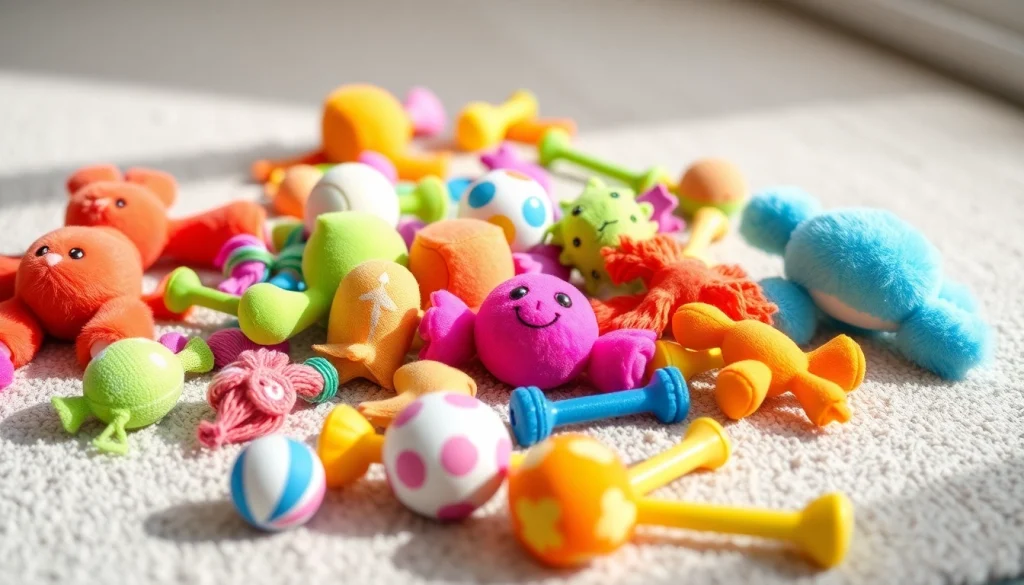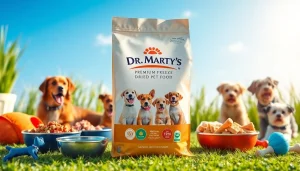
Understanding the Benefits of Pet Toys
When it comes to caring for our furry companions, pet toys play an indispensable role in ensuring they lead happy, healthy lives. Pet toys do more than just provide entertainment; they serve numerous functions that significantly enhance a pet’s physical and mental well-being. In this article, we will explore the multifaceted benefits of pet toys, the types available, important safety tips for choosing toys, and even some creative DIY options. Let’s delve into the world of pet toys and discover how they enrich the lives of our beloved pets.
Why Pet Toys Are Essential for Mental Stimulation
Mental stimulation is crucial for pets, particularly for dogs and cats prone to boredom. Toys designed for this purpose, such as interactive puzzles or treat-dispensing toys, engage pets in cognitive challenges that require problem-solving skills. Studies suggest that mentally stimulating toys can help reduce behavioral issues, including anxiety and destructive tendencies, by keeping pets engaged and focused.
Physical Activity: Keeping Pets Fit and Healthy
Pets, especially active breeds, require regular exercise to maintain a healthy weight and prevent obesity-related complications. Toys such as frisbees, fetch balls, and tug ropes encourage physical activity and foster an active lifestyle. Engaging in play with a pet not only helps them burn off energy but also strengthens the bond between pet and owner.
Choosing the Right Toys for Your Pet’s Needs
Understanding your pet’s specific preferences and requirements is essential in selecting the appropriate toys. Factors such as age, breed, size, and energy levels should be considered. For example, young puppies might benefit from soft, chewable toys that soothe teething gums, while larger breeds may need robust, durable toys that withstand aggressive chewing.
Types of Pet Toys Available
Interactive Pet Toys for Engaged Play
Interactive toys are designed to stimulate a pet mentally and physically. These toys often require the animal to figure out how to access a treat or solve a puzzle, which keeps their minds sharp and engaged. Popular examples include:
- Puzzle feeders: These toys challenge pets to work for their food, making mealtime a fun game.
- Squeaky toys: These capture a dog’s attention with sound and encourage playfulness.
- Treat-dispensing balls: These require pets to nudge and bowl them around, promoting physical activity.
Durable Chew Toys for Aggressive Chewers
For pets with strong jaws or a habit of aggressive chewing, it’s critical to choose toys specifically designed for durability. Look for tougher materials like rubber or nylon, which can withstand heavy chewing and prevent breakage. Popular products that cater to aggressive chewers include:
- KONG Classic: A well-known brand, this rubber toy can be filled with treats and frozen for added appeal.
- GoughNuts: Designed with safety in mind, these toys are perfect for chewers and come with a safety indicator.
- Celebrity Pet Toys: Many companies offer unique designs that are both fun and durable, combining playfulness with function.
Plush Toys: Comfort and Fun for Pets
Plush toys serve dual purposes; they offer comfort to pets looking for solace and are great for interactive play. These toys often come in various shapes and sizes, mimicking characters or animals that excite pets. When choosing a plush toy, ensure it does not contain small parts that pose choking hazards. Brands like Frisco and BarkBox offer high-quality plush toys known for their durability and comfort.
How to Choose Safe Pet Toys
Materials to Avoid for Your Pet’s Safety
Safety should be the primary concern when selecting toys for your pet. Avoid toys made from materials that could be hazardous, such as:
- Lead and phthalates: These chemicals can be harmful if ingested. Ensure toys are labeled as free from these substances.
- Small parts: Toys with easily detachable components can present choking hazards, especially for small pets.
- Non-recyclable plastics: Whenever possible, choose eco-friendly toys made from safe, sustainable materials.
Age-Appropriate Toy Selection for Pets
Selecting toys based on your pet’s age is essential for their enjoyment and safety. For instance:
- For puppies: Opt for soft, small toys that are easy for their tiny mouths to pick up.
- For adult dogs: Durable toys that withstand tearing and aggressive play are necessary to keep them engaged.
- For senior pets: Choose lightweight toys that are easier for them to manage and handle.
Tips for Inspecting Toys Regularly
It’s crucial to regularly check your pet’s toys to ensure they remain safe and intact. Look for:
- Signs of wear and tear, such as fraying seams or cracks in rigid toys.
- Missing parts that could be swallowed.
- Changes in texture or material that could indicate potential health risks.
Replacing damaged toys promptly can prevent accidents and ensure your pet’s safety.
Creating Homemade Pet Toys
DIY Ideas for Interactive Pet Play
Creating homemade pet toys can be a fun and resourceful way to engage your pets. Here are a few ideas:
- Old T-shirt Tug Toy: Braid strips of an old t-shirt to create a tug toy, which is durable and safe for chewing.
- Sock Ball: Fill an old sock with crumpled paper or tennis balls, then knot the end to create a squeezable toy.
- Water Bottle Toy: Stuff a water bottle inside a sock for a crinkly toy that most dogs love.
Using Household Items to Make Safe Toys
Many household items can be repurposed into toys without the need for special materials. For instance:
- Cardboard boxes: Cats adore exploring and hiding in boxes. Cut holes for extra fun!
- Plastic containers: Old food containers can serve as puzzle toys when filled with treats.
- Old blankets or towels: Can be tied or braided to create comfort items or fetch toys.
Benefits of Customizing Your Pet’s Toys
Customizing toys offers various benefits, such as:
- Cost-effectiveness: DIY toys are often cheaper than store-bought alternatives while still providing enjoyment.
- Personal touch: Tailoring toys to suit your pet’s specific preferences fosters stronger connections.
- Safety assurance: Knowing the materials used can give peace of mind regarding your pet’s safety.
Conclusion: Keeping Your Pets Engaged with the Right Toys
Reviewing Your Pet’s Toy Collection Regularly
As pets grow and their interests change, it’s basic care to review and rotate their toy collection. Regular updates can reignite interest and keep pets mentally stimulated and physically active.
Understanding Your Pet’s Preferences
Getting to know what types of toys your pet enjoys can help streamline future purchases. Keep an eye on their play patterns and preferences, adjusting as necessary. Implementing a mix of interactive, chew-resistant, and plush toys will cater to all aspects of your pet’s playtime needs.
Investing in Quality Toy Brands
Investing in reputable toy brands often correlates with product longevity and safety. High-quality toys not only provide more value due to durability but can also enhance your pet’s play experience. Brands like PetSmart, Chewy, and Amazon‘s curated selections offer extensive choices for all pet types.






